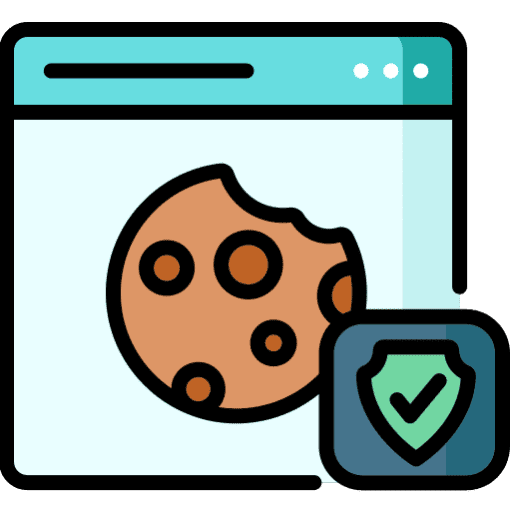En este mundo acelerado en el que vivimos, el tiempo es un recurso precioso que a menudo se nos escapa entre los dedos como la arena. Nos encontramos constantemente haciendo malabarismos con las tareas, respondiendo a innumerables notificaciones y perdiéndonos en el vasto abismo de las redes sociales. Pero, ¿y si hubiera una forma de recuperar ese tiempo perdido, de hacer que cada minuto cuente?
Pues bien, querido lector, ¡estás de suerte! En este artículo, exploraremos el arte de minimizar la pérdida de tiempo y descubriremos los secretos para utilizar eficazmente sus valiosas horas.
La importancia de minimizar el tiempo perdido
El tiempo es una de esas cosas que una vez que se va, se va para siempre. Cada momento desperdiciado en actividades improductivas es una oportunidad perdida para el crecimiento personal y el logro.
Al reconocer la importancia de minimizar el tiempo perdido, podemos desbloquear un nuevo nivel de productividad y satisfacción en nuestras vidas. Cuando nos dejamos consumir por las distracciones y participamos en actividades que no aportan valor, como navegar sin sentido por las redes sociales o caer en el abismo de reuniones o conversaciones innecesarias, nuestros objetivos se alejan.
Nos quedamos atrapados en un ciclo de ajetreo sin conseguir nada importante. Si nos esforzamos conscientemente por minimizar la pérdida de tiempo, podemos liberarnos de este ciclo y crear espacio para el trabajo significativo y las actividades personales.
Ventajas de utilizar el tiempo eficazmente
Imagina una vida en la que alcanzas tus objetivos con facilidad y al mismo tiempo tienes tiempo de sobra para actividades de ocio o momentos de calidad con tus seres queridos; una existencia en la que la productividad no es sólo un sueño difícil de alcanzar, sino una realidad tangible. Si domina el arte de utilizar el tiempo con eficacia, estas ventajas pueden convertirse en su experiencia cotidiana. Una ventaja importante es el aumento de la eficacia.
Cuando gestionamos bien nuestro tiempo y nos centramos en las tareas importantes en lugar de enredarnos en asuntos triviales, somos más eficientes a la hora de completar nuestro trabajo. Esta nueva eficiencia no sólo nos ahorra incontables horas, sino que también nos permite sobresalir en nuestros esfuerzos y destacar entre la multitud.
Otra ventaja de gestión eficaz del tiempo es la reducción de los niveles de estrés. Cuando tenemos un plan claro sobre cómo emplear nuestro tiempo, podemos afrontar cada día con un sentido de propósito y dirección.
Esto elimina la ansiedad que suele acompañar a la incertidumbre y nos permite abordar nuestras tareas con confianza. Al reducir al mínimo la pérdida de tiempo, creamos espacio para la relajación, el autocuidado y el rejuvenecimiento, lo que se traduce en una mentalidad más sana y un bienestar general.
Además, utilizar el tiempo eficazmente nos permite perseguir el crecimiento y el desarrollo personales. Cuando damos prioridad a tareas que se alinean con nuestros objetivos y aspiraciones, estamos invirtiendo en nosotros mismos.
Tanto si se trata de aprender una nueva habilidad como de dedicar tiempo a un proyecto que nos apasiona, utilizar nuestro tiempo sabiamente nos da espacio para explorar nuevas oportunidades y ampliar nuestros horizontes. Minimizar la pérdida de tiempo no consiste solo en ser más eficientes, sino en recuperar el control sobre cómo empleamos cada valioso momento.
Mediante técnicas eficaces de gestión del tiempo y un esfuerzo consciente por dar prioridad al trabajo significativo frente a las distracciones, podemos desbloquear un mundo de posibilidades en el que florezca la productividad, disminuya el estrés y prospere el crecimiento personal. Así que abróchate el cinturón para embarcarnos juntos en este viaje en el que las horas perdidas se transforman en momentos de vida con propósito.
Comprender las pérdidas de tiempo
Ah, los ladrones de tiempo que acechan en las sombras, robándonos valiosos minutos y horas de nuestras vidas. Es crucial identificar a estos escurridizos culpables para tomar el control de nuestro tiempo.
Uno de los culpables más notorios es el desplazamiento por las redes sociales. Todos sabemos lo adictivo que puede llegar a ser, con interminables feeds y tentadoras notificaciones que nos atraen sin esfuerzo a un pozo sin fondo de memes y vídeos de gatos.
Otro ladrón notorio son las reuniones o conversaciones excesivas. Aunque la colaboración es esencial, seamos sinceros: no todas las reuniones son productivas.
A veces parecen meras excusas para que la gente se escuche a sí misma hablar o muestre su destreza con PowerPoint. Y no me hagas hablar de esas interminables conversaciones en la fuente de agua que te hacen olvidar para qué has entrado en la oficina.
Desplazamiento por las redes sociales
Imagínatelo: abres tu aplicación favorita de redes sociales para consultar un mensaje o echar un vistazo rápido a unas cuantas actualizaciones, pero antes de que te des cuenta, las horas se te han escapado como arena entre los dedos. El desplazamiento por las redes sociales es, sin duda, uno de los mayores adversarios de la gestión eficaz del tiempo. Un dato sorprendente: según estudios recientes, una persona media pasa alrededor de dos horas y media al día en las redes sociales.
Es una cantidad asombrosa de tiempo perdido en lugar de hacer algo productivo o significativo. Entonces, ¿por qué las redes sociales ejercen un atractivo tan irresistible?
Bueno, estas plataformas están diseñadas con características adictivas que nos mantienen pegados: scroll infinito, colores vibrantes, feeds de contenidos personalizados a nuestra medida. Se convierte en un hábito sin sentido del que no somos conscientes hasta que nos damos cuenta del tiempo que hemos perdido en sus garras.
Exceso de reuniones o conversaciones
Las reuniones pueden ser un foro productivo para intercambiar ideas y tomar decisiones, o bien un despilfarro en el que no se consigue nada importante. Lamentablemente, esto último parece ser lo más habitual hoy en día. ¿Has asistido alguna vez a una reunión que se alarga y se alarga, aparentemente sin propósito ni dirección?
La sala se convierte en un caldo de cultivo de tangentes, anécdotas inconexas y balbuceos incoherentes. Antes de que uno se dé cuenta, se han malgastado horas preciosas en conversaciones vacías.
Del mismo modo, esas conversaciones improvisadas en el refrigerador de agua o cerca de la máquina de café pueden ser interacciones sociales encantadoras, pero a menudo a expensas de tiempo que podría haberse empleado mejor trabajando en tareas que realmente importan. No se trata de suprimir todas las conversaciones, sino de ser consciente de su impacto en la productividad.
Procrastinación y multitarea
Ah, la procrastinación: el arte de retrasar las tareas hasta que se convierten en insoportables montañas de estrés. Todos hemos sido víctimas de sus seductoras garras alguna vez.
Ya sea revisando el correo electrónico por enésima vez o dándonos atracones aleatorios de YouTube en lugar de abordar tareas importantes, la procrastinación se come nuestro valioso tiempo como una bestia voraz. La multitarea puede parecer un método eficaz para hacer más cosas a la vez, pero los estudios demuestran que nuestro cerebro no está diseñado para ello.
En lugar de ello, cambiamos rápidamente de una tarea a otra -fenómeno conocido como cambio de tarea-, lo que disminuye la eficacia general y aumenta las posibilidades de cometer errores. Para combatir tanto la procrastinación como la multitarea, necesitamos disciplina y concentración.
Empieza por dividir las tareas en partes más pequeñas y manejables y crear un plan de acción claro. Adoptar técnicas como bloqueo horario puede ayudar a asignar franjas horarias específicas a distintas actividades, minimizando al mismo tiempo las distracciones.
Recuerde: comprender estas actividades habituales que nos hacen perder el tiempo es clave para recuperar el control sobre nuestros horarios. Identificándolas desde el principio y aplicando estrategias eficaces para minimizar su impacto, allanamos el camino para maximizar nuestro potencial de productividad.
Estrategias para minimizar la pérdida de tiempo
Estas son las mejores estrategias de gestión del tiempo, según expertos como el Universidad de SheffieldEl Institutos Nacionales de Saludy el Universidad Charles Darwin.
Priorizar tareas y fijar objetivos
Una de las formas más eficaces de minimizar la pérdida de tiempo es priorizar las tareas y establecer objetivos claros. Al saber qué hay que hacer y en qué orden, puedes concentrar tu energía en las actividades más importantes.
Una herramienta útil para la gestión de tareas es la Matriz de Eisenhower, que clasifica las tareas en cuatro cuadrantes en función de su urgencia e importancia. Esta matriz te permite identificar las tareas de alta prioridad que requieren atención inmediata, asegurándote de que asignas tu tiempo sabiamente.
Utilización de la Matriz Eisenhower para la gestión de tareas
La Matriz Eisenhower, que debe su nombre al ex presidente de Estados Unidos Dwight D. Eisenhower, proporciona un enfoque sistemático para gestionar tus tareas. Consta de cuatro cuadrantes: Urgente e importante, Importante pero no urgente, Urgente pero no importante y No urgente y no importante.
Si utiliza esta matriz como guía, podrá priorizar sus tareas de forma eficaz. En el cuadrante Urgente e importante, céntrate en completar las tareas que tienen plazos inminentes o requieren atención inmediata.
Suelen ser actividades críticas que no pueden retrasarse sin consecuencias. El cuadrante Importante pero no urgente contiene tareas que contribuyen a los objetivos a largo plazo o al crecimiento personal, pero que pueden no tener plazos apremiantes.
Asigne periodos de tiempo regulares a estas actividades para asegurarse de que no se pasan por alto o se dejan sin hacer. Las tareas clasificadas como Urgentes pero No Importantes deben evaluarse cuidadosamente.
Considere la posibilidad de delegar o encontrar formas más eficientes de llevarlas a cabo para que no le consuman un tiempo valioso que podría emplear mejor en otras cosas. En el cuadrante No urgente y No importante se encuentran las distracciones o actividades innecesarias que pueden eliminarse por completo de la agenda.
Dividir grandes tareas en partes más pequeñas y manejables
Los grandes proyectos o las tareas complejas pueden parecer abrumadores a primera vista. Para abordarlos con eficacia y minimizar la pérdida de tiempo, divídelos en tareas más pequeñas y manejables.
Al dividir el proyecto en trozos del tamaño de un bocado, puedes centrarte en completar un paso cada vez sin sentirte abrumado. Este enfoque no solo hace que el trabajo sea más digerible, sino que también permite una mejor planificación y seguimiento del progreso.
Crear un horario estructurado y cumplirlo
Para optimizar el uso de su tiempo, es fundamental crear un horario estructurado que describa sus actividades y compromisos diarios. Empieza por determinar tus horas más productivas en función de tus preferencias personales y niveles de energía. A continuación, asigna franjas horarias específicas a distintas actividades mediante técnicas de bloqueo temporal.
Establezca plazos realistas para cada tarea o actividad de su programa para mantener un sentido de urgencia y responsabilidad. Fíjate objetivos alcanzables para evitar sobrecargarte o crear expectativas poco realistas que puedan provocar frustración o agotamiento.
Eliminar las distracciones en el entorno de trabajo
Reducir al mínimo las distracciones es esencial para maximizar la productividad y minimizar la pérdida de tiempo. Un método eficaz es establecer límites con los compañeros o familiares durante los periodos de trabajo designados.
Comunica claramente tu necesidad de concentración ininterrumpida, ya sea cerrando la puerta, poniéndote los auriculares o utilizando señales visuales, como indicar cuándo no estás disponible para interrupciones. Además, utiliza aplicaciones de productividad como RescueTime o extensiones del navegador que ayudan a bloquear los sitios web que distraen la atención durante las sesiones de trabajo dedicadas.
Estas herramientas pueden restringir temporalmente el acceso a plataformas de redes sociales, sitios de compras en línea o cualquier otro sitio web que desvíe tu atención de las tareas importantes. Al poner en práctica estas estrategias para priorizar tareas y objetivos, utilizar la Matriz de Eisenhower y dividir las tareas grandes en partes más pequeñas, y crear un calendario estructurado con plazos realistas al tiempo que se eliminan las distracciones en el entorno de trabajo, se puede minimizar significativamente la pérdida de tiempo y mejorar la productividad general tanto en el ámbito profesional como en el personal.
Aumentar la productividad mediante técnicas de gestión del tiempo
Utilizar la Técnica Pomodoro para sesiones de trabajo concentradas
Imagínese lo siguiente: se sienta en su mesa, dispuesto a abordar un proyecto, pero se distrae fácilmente al cabo de unos minutos. ¿Le resulta familiar? Pues no te preocupes.
La Técnica Pomodoro está aquí para rescatar tu productividad. Esta técnica de gestión del tiempo consiste en dividir el trabajo en intervalos de concentración intensa seguidos de breves descansos.
Funciona así: programa un temporizador para, por ejemplo, 25 minutos y comprométete a trabajar en una tarea específica con toda tu atención durante ese tiempo. Cuando suene el temporizador, tómate un breve descanso de unos 5 minutos.
Repite este ciclo cuatro veces y luego tómate un descanso más largo de unos 15-30 minutos. Adoptando la Técnica Pomodoro, creas intervalos de trabajo estructurados que aumentan la concentración y evitan el agotamiento.
Estas ráfagas de actividad concentrada le permiten avanzar significativamente en sus tareas sabiendo que un descanso está a la vuelta de la esquina. Además, fomenta la agilidad mental al retarte a ti mismo a completar lo máximo posible en cada periodo de tiempo.
Aplicar el método "Cómete esa rana" para abordar primero las tareas difíciles
Mark Twain dijo célebremente: "Cómete una rana viva a primera hora de la mañana y no te pasará nada peor el resto del día". Aunque no recomiendo comer anfibios literalmente, adoptar la filosofía de Twain puede hacer maravillas por tu productividad. El método "Cómete esa rana" sugiere abordar la tarea más difícil o importante justo al principio del día. ¿Por qué empezar con algo difícil?
Pues bien, a menudo estas desalentadoras tareas tienden a rondar nuestras cabezas durante todo el día si las dejamos para más tarde. Si te ocupas de ellas al principio, cuando tienes energía y concentración frescas, eliminas la procrastinación y ganas impulso para el resto del día.
Así que identifique la rana de su lista de tareas pendientes -la tarea que ha estado evitando- y comprométase a completarla a primera hora de la mañana. Una vez que lo hayas hecho, el resto del día será coser y cantar.
Aprovechar las herramientas tecnológicas para una gestión eficaz del tiempo
En el mundo digital actual, la tecnología puede ser a la vez una maldición y una bendición en lo que respecta a la gestión del tiempo. Sin embargo, si se utilizan las herramientas y aplicaciones adecuadas, se puede aprovechar su poder para mejorar la productividad de forma significativa. El software de gestión de proyectos y las aplicaciones de seguimiento de tareas son recursos inestimables para organizar tu trabajo de forma eficiente.
Estas herramientas le permiten crear calendarios de proyectos, establecer plazos, asignar tareas a los miembros del equipo y realizar un seguimiento del progreso, todo en un mismo lugar. Con actualizaciones en tiempo real y funciones de colaboración sin fisuras, estarás al tanto de tus proyectos y reducirás al mínimo la pérdida de tiempo buscando información o coordinándote con tus compañeros.
Además, las herramientas de automatización pueden ayudar a racionalizar las tareas repetitivas que consumen su valioso tiempo. Ya se trate de automatizar las respuestas por correo electrónico o de crear plantillas para documentos de uso frecuente, estas herramientas pueden reducir el esfuerzo manual y liberar más tiempo para actividades de alto valor.
Explore las distintas opciones de automatización disponibles en su software actual o considere plataformas de automatización específicas para descubrir cómo pueden revolucionar su flujo de trabajo. Recuerde: la tecnología es solo una herramienta; lo que marca la diferencia es cómo se utiliza.
Selecciona las tecnologías que mejor se adapten a tus necesidades específicas y utilízalas como aliadas para maximizar la eficiencia. Con esto concluimos nuestra exploración de varias técnicas de gestión del tiempo destinadas a aumentar la productividad.
Poniendo en práctica prácticas como las sesiones Pomodoro, afrontando las tareas difíciles con el método "Cómete esa rana" y aprovechando las herramientas tecnológicas de forma inteligente -como el software de gestión de proyectos y las soluciones de automatización- recuperarás el control sobre tu tiempo y conseguirás más con menos esfuerzo. Así que adelante, prueba estas estrategias y observa cómo los minutos perdidos se transforman en preciosos momentos de realización.
Consejos para mejorar la eficacia personal
En la búsqueda de la eficiencia personal, es crucial dar prioridad al autocuidado. Cuando descuidamos nuestro bienestar físico y mental, nuestra productividad se resiente.
He aquí algunos hábitos de autocuidado que pueden mejorar la concentración y la eficiencia general:
1. Duerma lo suficiente: Un sueño adecuado es la base de un día productivo. Intenta dormir entre siete y ocho horas de calidad cada noche para despertarte renovado y listo para afrontar tus tareas.
2. Haga ejercicio con regularidad: La actividad física aumenta los niveles de energía y mejora la función cognitiva. Incorpora el ejercicio a tu rutina para aumentar el estado de alerta, reducir el estrés y mejorar la concentración a lo largo del día.
3. Practica la atención plena o la meditación: Si dedicas unos minutos al día a centrar tu mente mediante técnicas de atención plena o meditación, cultivarás la concentración y reducirás las distracciones que pueden hacer descarrilar la productividad.
4. Haz pausas con regularidad: El trabajo continuo sin pausas puede provocar fatiga mental y una disminución de la productividad con el tiempo. Programa pequeños descansos a lo largo del día para recargar la mente, estirar el cuerpo o realizar actividades que te aporten alegría.
5. Mantenga una dieta sana: Nutrir el cuerpo con alimentos nutritivos ayuda a mantener los niveles de energía y favorece el funcionamiento óptimo del cerebro. Evita el exceso de cafeína o los tentempiés azucarados, que pueden proporcionar picos de energía temporales pero que acaban provocando bajones.
Conclusión
Reducir al mínimo la pérdida de tiempo requiere un esfuerzo intencionado, pero la recompensa merece la pena: aumento de la productividad, reducción de los niveles de estrés y una mayor sensación de realización tanto en el ámbito personal como en el profesional. Si comprendemos cuáles son los derroches de tiempo más habituales, aplicamos estrategias eficaces como la priorización y la programación estructurada, aprovechamos técnicas de gestión del tiempo como la Técnica Pomodoro o el método "Cómete esa rana" y, al mismo tiempo, damos prioridad a hábitos de autocuidado como dormir lo suficiente y hacer ejercicio con regularidad, todos podemos progresar significativamente para convertirnos en personas más eficientes.
Recuerda que Roma no se construyó en un día y que la eficiencia no se transforma de la noche a la mañana. Requiere práctica constante y ajustes para encontrar lo que mejor funciona para ti.
Acepte el viaje con una mentalidad positiva, celebre las pequeñas victorias a lo largo del camino y sea amable consigo mismo cuando se produzcan contratiempos. Con paciencia y perseverancia, desarrollarás gradualmente hábitos que optimizarán tu tiempo y te permitirán lograr más cosas sin dejar de tener espacio para momentos significativos de descanso y rejuvenecimiento.
Así que avanza con determinación, armado con estos consejos para minimizar la pérdida de tiempo. Ojalá puedas liberar tu verdadero potencial, aprovechar al máximo cada momento precioso y abrazar una vida más plena en la que la productividad se convierta en una segunda naturaleza.

















